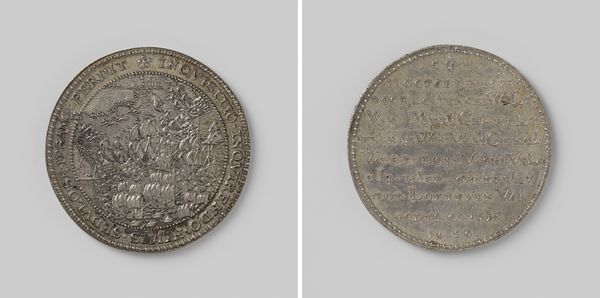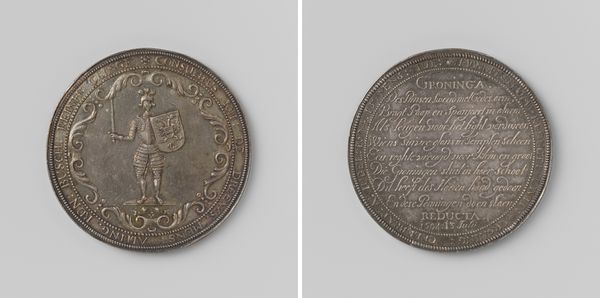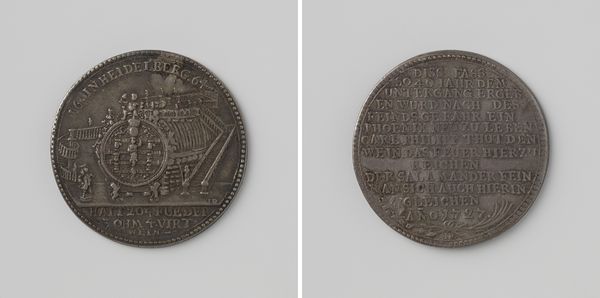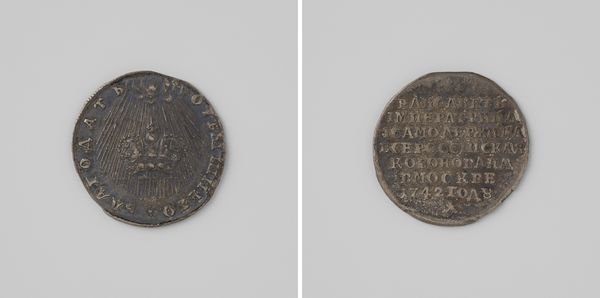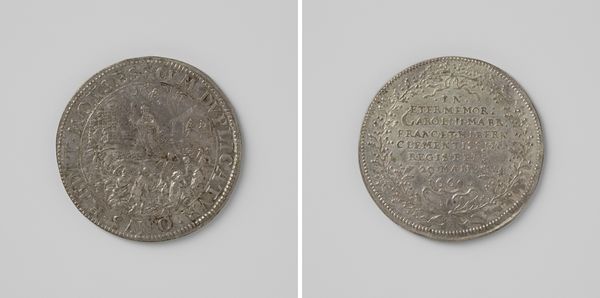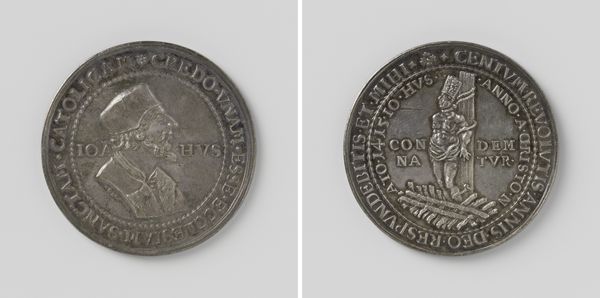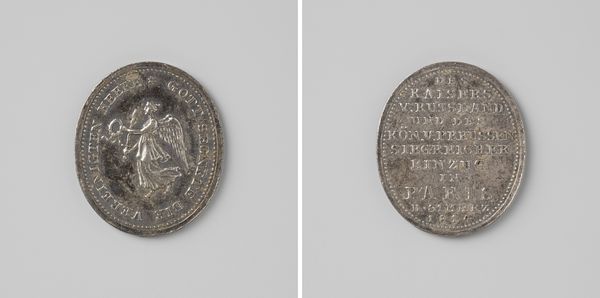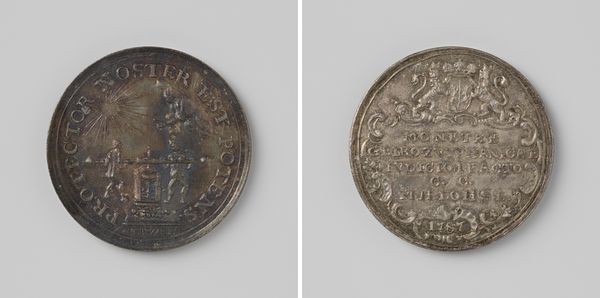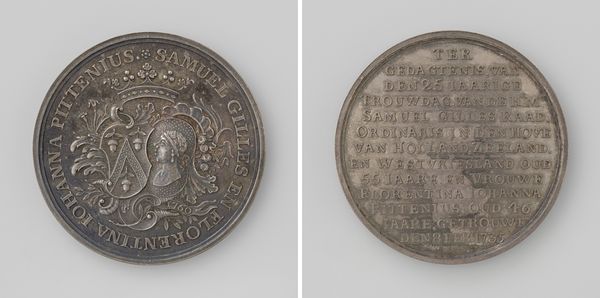
Jan van Leiden, aanvoerder der wederdopers en de overgave van Munster 1535
0:00
0:00
print, metal, sculpture
#
portrait
#
medieval
# print
#
metal
#
sculpture
#
sculpture
#
history-painting
Dimensions: diameter 4.6 cm, weight 22.47 gr
Copyright: Rijks Museum: Open Domain
Curator: This fascinating object at the Rijksmuseum depicts “Jan van Leiden, aanvoerder der wederdopers en de overgave van Munster,” dating back to 1535. It's a metal print, essentially a historical record rendered as both art and artifact. Editor: My first impression? It's surprisingly…austere. Cold, almost. The metal gives it this distant, official feel. Like a historical document made shiny. Curator: Indeed. This piece speaks volumes about the Anabaptist leader Jan van Leiden, within the tumultuous religious and political landscape of the 16th century. His controversial reign in Munster became a focal point for radical reform. We need to see beyond the shininess! Editor: Oh, I get that. It’s the clash between the subject matter—religious zealotry and upheaval—and the medium, which is so…contained. You’ve got the portrait on one side, all encircled, and then the wall of text. Almost like a spiritual leader caught in a bureaucratic nightmare. Curator: Exactly! Consider how Jan's radical beliefs challenged the established order, pushing against traditional authority, while the very form of the artwork reinforces power structures through memorializing history in print and portraiture. It’s layered irony. Editor: The contrast gives the work its energy, and then you factor in that it’s intended for wide distribution as prints are... Did these metal artworks usually act as propaganda? Curator: Often they were produced to solidify a leader’s place in history. Whether commemorative or critical, their existence helped shape public memory around key historical moments. They served to circulate particular interpretations of events, impacting cultural perceptions and attitudes for years to come. It wasn’t objective record-keeping; it was active historical construction. Editor: And the "official" feel is exactly the point. Even rebellion becomes official when rendered as art! Still... it feels slightly too formal for something about rebelling? Curator: Well, perhaps that tells us a lot about the anxieties of that time! Jan van Leiden represents both profound spiritual fervor and devastating societal upheaval, a paradox captured by the restrained formality of this piece. Editor: Huh. A cold snapshot of religious fervor and history... it's interesting how a material can whisper that loudly. Curator: Precisely. And now, knowing a bit more, I am feeling very conflicted now, the chill factor is much warmer, metaphorically speaking.
Comments
No comments
Be the first to comment and join the conversation on the ultimate creative platform.

